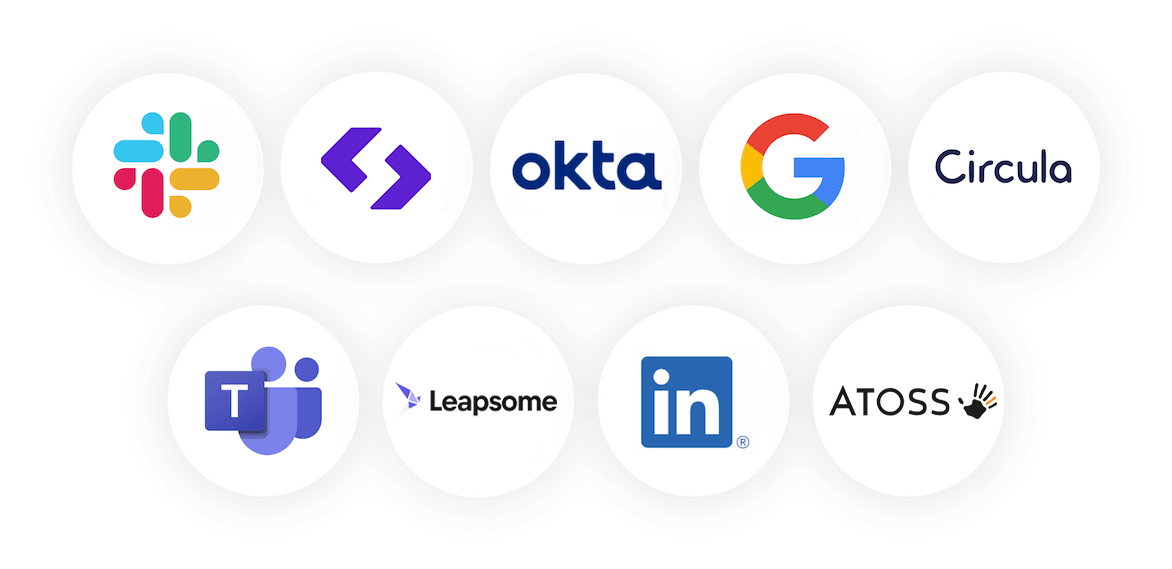2. May 2024
How to harness AI for your L&D programmes

Automation has transformed L&D by streamlining the administrative tasks and busy work that took up most of our days. We’re starting to win back those precious hours and days to focus on high-value work.
Built-in integrations with HR are helping L&D teams free up their day-to-day, making L&D and HR collaboration smoother than ever.
Machine learning and AI-powered tools are also helping L&D teams recharge workforce development initiatives and collaborate more effectively with other teams (notably HR) and stakeholders.
Closing skills gaps: The AI advantage
As technology evolves, the skills gaps facing organisations widen. At the same time, the top-down methods of enterprise learning become less suited to meeting the needs of employees and businesses.
A recent survey of HR professionals found that over a third of employees in the UK will need new or better skills to meet the demands of future roles. Meanwhile the latest LinkedIn Workplace Learning Report shows that upskilling employees is one of L&D’s top priorities.
Many L&D leaders are considering AI's possibilities for helping us tackle the upskilling challenge. As Donald H Taylor, lead researcher of the L&D Global Sentiment Survey explains, “What goes through the survey is the idea that AI is absorbing our attention, driving our sense of what is important and dictating the challenges we are responding to.”
L&D teams urgently need innovative AI solutions to help them enhance the efficiency and effectiveness of managing and updating learning initiatives.
The AI features that are supercharging L&D teams
AI-powered features that automate tasks and improve learning experiences are essential for L&D teams. AI enables them to plan and execute workforce development effectively.
1. Skills mapping
Leveraging an AI-powered skills ontology (set of concepts) can help you identify and track your organisation's and industry's skills. A skills dashboard can then enable you to map and identify gaps and manage employee performance by tracking skill progression.
For example, SkillsGPT by 360Learning can be used to speed up your skills ontology process. The tool generates lists of job-specific skills within your organisation and builds a proficiency grid for each skill.
2. Content creation
Similarly, AI-powered authoring tools empower you to deploy your learning experiences in minutes.
For example, a learning solution that lets you leverage templates or customisable prompts helps you decentralise content creation to your subject-matter experts. It also helps ensure that your learning experiences meet company requirements or policies.
3. Personalised learning paths
Developing personalised learning experiences for employees is critical to ensuring you meet their development needs.
With AI-powered personalised learning paths, your team can meet individual learners where they are. AI can help you to create development plans from onboarding to progression planning, boosting retention.
4. Data-driven insights
In today’s environment, most L&D teams increasingly are focused on gathering the right data to show any return on investment.
As Laura Paramoure, CEO of eParamus shares: “We need data on skills: whether we are working on the right ones, whether we can produce them and whether those skills get transferred to the job..”
Machine learning allows you to analyse learner data to identify trends and skills gaps. These predictive analytics can also help you anticipate your future upskilling needs and iterate your learning strategies at pace.
The benefits of integrating AI into L&D
AI within L&D helps you save time on manual tasks, shift from a top-down learning approach, and start focusing on your organisation's upskilling needs.
AI-powered tools make it easy for SMEs to get involved and co-author hyper-relevant courses. This empowers collaborative learning and increases efficiency and cost-effectiveness.
L&D teams can also expect improved learner engagement and performance through customised learning experiences tailored to individual needs, interests and workflows.
Overcoming common challenges with AI
Many L&D professionals are still concerned about leveraging AI in their practices. Navigating these requires focusing on security measures and practical user training. Here’s how to do it:
Data security and safety: To ensure the security of your workforce’s data, we recommend using AI tools that provide secure licenses and restrict access to authorised personnel.
Lack of information: Since AI in L&D is relatively new, many users may need more expertise to leverage these tools effectively. Adequate training is essential to help users understand the best practices for achieving the desired outcomes from AI tools.
A great way to improve your fluency and proficiency using AI professionally is through AI certification courses.
AI will continue to shape the future of L&D
Machine learning and AI will continue to grow and improve collaboration between L&D and HR teams. To make the most significant impact, you can leverage AI-powered tools that integrate into your L&D and HR ecosystems.
To see the true power of AI-assisted collaboration, you can eliminate double data entry and streamline your HR and learning workflows with Personio’s integration with 360Learning.
Interested in adding seamless connection to your favourite HR and L&D tools? Check out our full suite of 200+ integrations here.
